 |
| Looking back at Aulla |
 |
| The second hill we would climb! |
I could see the remnants of a castle at the tippy top and was dying to explore the little town and Chad, being the good sport that he is, followed along. The little town is called Bibola and it is truly a hidden gem! Bibola is a cute medieval hilltop town with stunning views from the castle all around the valleys below.
 |
| Bibola |
 |
| Entrance way |
 |
| A map of the hilltop town |
Bibola was amazing to walk around and explore and had a similar feel to the Cinque Terre (albeit without the colors). You could tell Bibola doesn't receive much in the way of tourism as there is only one mid-sized road and not a soul in sight.
 |
| KITTY! |
 |
| Typical Chad vs cat pose... |
 |
| Bibola church |
The castle at the top was in ruins but around a corner there was a rickety old stair/ladder which we climbed and were then able to access the ground floor. The castle was completely overgrown but looked like at some point decades ago it was open for tourists to explore. We had the feeling that the castle of Bibola had slowly become overgrown as people lost interest in the sleepy town.
 |
| Perhaps the main entrance? |
 |
| View of Aulla and our route from the day before |
 |
| Nature seems to be winning this battle |
 |
| So beautiful! |
Leaving Bibola we had another steep climb to the top of the next hill but finally we reached it!! The climbs were extremely steep and difficult and it was so warm too! At the top of the second hill we could see the Mediterranean Sea and La Spezia and what we thought was the island of Corsica!
 |
| Olive groves |
 |
| So steep! |
|
 |
| A very ruined car! |
During the walk down we passed another beautiful hilltop town (this one as colorful as the Cinque Terre) called Panzano Superiore. We stopped for half an hour for a coffee break and to dry the sweat from the morning climbs!
As we continued downhill the trail led us directly through the archeological site of Brina Castle. This was such a cool find! One of the towers had fallen over but had maintained its round shape and you could see where the internal stair well had been. The whole area was beautiful with the stone ruins and views all around.
 |
| Leaving Panzano Superiore |
 |
| Brina Castle |
 |
| The tower of Brina Castle! |
 |
| Look how thick those walls were! |
 |
| The town of Sarzana |
 |
| Following the white and red Via Francigena signs. |
 |
| A little bit eerie! |
That night we stayed in Sarzana at a monastery where we had a mattress on the floor in a room together with the Frenchwoman (Marie had continued on that day). While the sleeping conditions were not the best, the town itself was incredible. Sarzana is a beautiful touristy town that grew up around the Via Francigena. There is a citadel on a hill overlooking the town as well as a fortress and a palace all inside the small town.
 |
| Sarzana Fortress |
 |
| Peter Jackson working at the comic store in Sarzana.. |
That night there was a market festival throughout the streets of Sarzana and it seemed that everyone in town was out and about! All the streets were lined with craft and food stalls. The feel was similar to our Saturday Market in Portland Oregon and we bought candied nuts to munch on while we perused the stalls.
The streets of Sarzana were so colorful and lively. We were thinking it must be a Halloween (night before actually) or perhaps a Daylight-savings festival. It was Sunday night so we were surprised to see so many people. Some kids running through the streets were decked out in their Halloween outfits.
 |
| Some fantastic street art |
Chad was craving some fresh fried fish and so we stopped and got some. There were even a few tables with free food!
 |
| Yumm! |
 |
| Dried fish |
We also indulged in some all-American burgers for dinner! Overall it was a lovely and lively evening that left us refreshed and ready for our next leg-- the next two days especially were supposed to be long arduous days!
 |
| Nighttime latte |
The next day we had a forty kilometer walk to Pietrasanta along the coastline. I had thought that this section would be delightful and scenic-- like walking along the northern beaches of France. This was not so, first of all it was very hot and humid so we were dying and sweaty. Also, the walk itself wasn't particularly attractive, the ocean side has been built up to such an extent that we only saw the ocean every once and a while and we were walking right next to it. There seemed to be hardly any private homes along the beach, which Chad (having lived for a long time in California) thought was weird. It was mainly small gated and private campos. The coastal area was completely dead though; hardly anyone about. It was definitely slow season!
 |
| The Mediterranean Sea |
 |
| Looking north towards the Cinque Terre and La Spezia |
 |
| Gated and private campo |
 |
| Palm tree pineapples! |
 |
| Sculpture of marble |
 |
| We turned inland during the last eight kilometers toward Pietrasanta |
We walked by the town of Carrara which has been one of the biggest marble quarries since the Middle Ages. It was amazing, there was marble everywhere! Lining the sidewalks, as benches, as sculptures, tossed in the river as trash- everywhere!
 |
| Marble sidewalks! |
 |
| Harvesting olives |
Pietrasanta was incredible! It is a very small town that straddles the foothills of the marble-rich Apuan Alps. It has Roman origins and part of the Roman wall still stands. The layout of the town is rectangular with a grid network of roads and one main piazza. While Pietrasanta declined after the 17th century due to malaria, in the 15th century it was quite important due to its connection to the marble of its surrounding landscape. Michelangelo was one of the first sculptors to appreciate the superiority of the local marble! The name 'Pietrasanta' even means "holy stone".
|
| Roman grid plan of Pietrasanta |
 |
| Beautiful framed entrance into Pietrasanta |
In the main piazza there is a sort of outdoor art museum with several modern sculptures. The Duomo's facade is completely done in marble and is beautiful at night! We noticed that from this point on until Lucca everything was done in marble.
 |
| Botero-style Virgin and child scene in a local church! |
 |
| Botero-style hell scene |
 |
| Sculpture in the main piazza |
 |
| The Duomo of Pietrasanta |
 |
| The Belltower |
 |
| Our hostel was a little house next to the building with the green shutters, you can can the Roman wall on the hillside above |
That night we stayed at another monastery uphill from the main square and we were able to see the beautiful sunset over the Duomo and watch as the piazza was filled with witches and vampires and little Harley Quinns.
 |
| Piazza sculptures |
 |
| Watching the sunset |
For Halloween the kids were going from store to store trick-or-treating while their parents sat at cafes around the main square drinking, chatting and occasionally glancing at their wild sugar-high children.

That night we had a fantastic seafood dinner at Sci. The owners came out to chat and offer their meal suggestions and we enjoyed seafood lasagna and spaghetti followed by dumplings and fried fish. It was an incredible meal! The owner's wife was chatting with us about our pilgrimage and suggested waiting an extra day to walk to Lucca since it was Lucca Comics' 50th anniversary. We had no idea what this meant but apparently it is something akin to our Comic-con where thousands of comic-book fans descend on a venue and totally geek out before leaving in a flurry, leaving the residents of said venue dizzy and picking up glitter and pieces of spandex.
I for one was kind of excited to get to Lucca on the last day of the event because, being the nerd that I am, I was curious to see what it would be all about!
 |
| Gorgeous marble sculpture |
 |
| The detail on the ripped seat is amazing! They captured the dirty foam seat perfectly! |
We woke up quite early again, hoping to walk another thirty-five kilometers to Lucca. Sleepy Pietrasanta in the aftermath of Halloween night is a very quiet affair!
The walk that day was actually really fun! We had one steep climb over a pass into the Lucca valley to the east but during the climb the scenery around us was beautiful!
 |
| There was a small section through a bamboo forest! |
 |
| Then a quick jaunt next to a farm in the bamboo forest. |
 |
| Met some sheep. |
 |
| Some banana trees! |
 |
| I bought a tiny Haribo for our mid-morning snack! |
Around noon we walked along a canal into the town of Camaiore. It was very busy in the town and we were wondering if there was a connection between the Lucca crowds and here but we decided it was because of a large market in town.
We passed by a fresh donut cart and decided we needed to splurge on some decadent treats! A little fun fact that I learned here-- Donuts are called bomboloni in Italy!
 |
| Oh man! Deez fresh bomboloni are awesome!! |
 |
| I naturally got Nutella in mine :D |
|
Camaiore was a beautiful little town and super crowded but since we hadn't decided if we were continuing on to Lucca that day or not we had to press on quickly.
 |
| Leaves! |
 |
| Directions and distances! |
 |
| I thought this was the funniest sign! |
That day as we were walking I called all of the cheaper pilgrim accommodations in Lucca and none of them were answering their phones!


Finally, almost at our highest point of the walk that day we stopped in the tiny hamlet of Valpromaro and decided to stay the night in their pilgrim accommodation before descending into Lucca the next day super early so we would have all day to explore the city!
 |
| Pilgrim house in Valpromaro |
We had arrived in Valpromaro early afternoon and so had all day to wash our clothes and rest from our strenuous days of walking. After a few hours a Frenchman came in. This man, Joachim, was a French-Portuguese pilgrim who had walked the Camino to Santiago de Compostela previously and was walking to Assisi along the Saint Francis Way. While Joachim was a very nice and interesting man, we found that he would never stop talking! I, being the terrible girlfriend that I am, gently and quietly extricated myself from the hour-long conversation in the kitchen and spent the next few hours in relative peace while poor Chad couldn't find an exit! Chad had his revenge though as he was able to wrangle me back into the conversation in which we remained intrenched for the rest of the night!
The next morning, alas, was raining all day! We woke up at around five in the morning and left Valpromaro in the dark. We had one more climb before descending into the lowlands of Lucca. By the time we had started walking uphill the sun was rising and we were getting a little more light for our slippery and dangerous trail.
The walk that morning was miserable! It was only fourteen kilometers but we hadn't been able to get any food before we left and were planning to eat at the first coffee shop we passed. Unfortunately that wasn't until three hours later when we were just a few kilometers out of Lucca! By the time we descended the last hill, which was very wet and slippery, and had arrived at the bar, we were soaked and ravenous! We wrung our socks out as we sat down, collecting a half cup of water of dirty water... Luckily we were close to Lucca and we walked the rest of the way with relative ease.
 |
| Renaissance ramparts of Lucca |
Lucca is a very cool city. The old town is completely enclosed by a Renaissance wall that still looks completely new. Apparently in the past Lucca had held car races on top of the battlements!
Walking into the town it seemed we were the sole people entering as most of the comic fans were flooding out. We passed by a woman holding the helmet of Sauron! After weaving though the hoards of exiting people, we found the place were we were staying that night and then set out to explore.
 |
| The streets of Lucca were strewn with Christmas lights |
 |
| Porta San Gervasio |
After a few hours we were getting hungry so we went to a cheap pizza place that was very highly recommended and ate some delicious pizza and a traditional Lucca chickpea pizza called 'Cecina'. It was a very busy hole in the wall place and a great find!
 |
| Cecina... our thoughts: tasty but probably not needed again :) |
It was still raining most of that day so we did mostly inside activities including the Torture Museum! I've never been to one of these and most of the time these types of museums are super touristy and expensive but we both wanted to do something like this so we buckled down and paid.
Holy Crap! There are a disturbingly large number of ways a person can torture another person! The whole museum was housed inside three rooms but the amount of instruments was astounding! There were descriptions in English so we were able to read about each of the instruments. Sometimes you would look at something and have no idea how it was used... obviously other times you would know exactly how it was used!

We entered the Torture Museum greeted with a guillotine and from there the instruments ranged anywhere from cutting out of tongues and the stocks to the breast ripper (hot steel tongs), the flaying knife for flaying people alive and the stretching rack. Humans are remarkably and disturbingly imaginative with their punishments! If you're squeamish I'd suggest skipping over this part as there are a few graphic pictures...

These ones gave me the heebie-jeebies. This is a chastity belt and a "pear". The first one is pretty self-explanatory. According to the description, this was used less in the sense of preventing a wife from being unfaithful and more as a (thin) veneer of protection for young maids when soldiers were being quartered in their town! The pear was so disgusting to me-- it would be inserted either orally (for slanderers and libelers), rectally (for sodomites) or vaginally (for women accused of consorting with the Devil) and slowly unscrewed until it punctured or mutilated the organ!

This next one was apparently a common means of execution in Germany from the Middle Ages until the 18th century! This was the "breaking with the wheel" during which the victim is lain atop beams of wood (to better facilitate the breaking of bones) and the executioner smashes all the limbs while avoiding fatal blows. The victim is then braided through the spokes of a wheel and put on display until they die-- apparently this was one of the more popular spectacles along with burning at the stake!
Chad recognized the next one because it was apparently in use as late as WWII! This is called the Jock's Mare. The victim is forced to sit astride the instrument naked while weights are attached to his feet. This was both very painful and often precipitated gangrene of the crotch! It was usually a military form of punishment.
This next one surprised me at first it didn't look that bad but the description made up for the lack of visual fear. This is the "stork" and apparently it induces violent cramps very quickly all along the torso. A few hours in this position can cause near insanity from the unrelenting pain!
The "rain of lead, pitch and sulphur" was absolutely appalling! These devices were used for water torture, similar to today's methods, as well as for pouring molten lead into the victim's nostrils, mouth and ears causing terrible burns!
This next one was interesting in the sense that I thought it was quite imaginative. It is a metal puppet that would be dressed in female clothes. The victim would be made to hug it tightly while asking for forgiveness while mechanical springs inside would trigger objects to poke our and injure or kill the victim! Apparently King Philip II of Spain was quite a fan of this apparatus and would watch the punishments along with members of his court!
Several of these objects seemed to have originated in Spain in fact... The Spanish boot and Knee-splitter are self explanatory and need no other descriptions on my part I think...
Another interesting one was the "Iron Maiden of Nuremberg". This was supposed to be a rather slow method of execution during which the closing of the doors would stab the victim and they would slowly bleed to death inside!
The corporeal punishment of children was terrible! While this practice was prevalent up until the beginning of the 20th century, some of the more imaginative examples were horrible. This was the "donkey" where the child was seated and flogged while the class watched the punishment!

Humiliation also seems to be a common theme in some of the punishments meant for social infractions. The branks or "scold's bridles", while funny to look at, were a method of punishment used by political and masculine powers to assert their authority over both the lower and female classes. "Scold's bridles" are aptly named as these masks were used in particular on women who "scolded" or critiqued masculine power. The majority of victims were women who "needed" to learn obedience and silence in the presence of ecclesia or secular power. Often these masks would have a metal mouth piece that would permanently mutilate the tongue. The victims were also staked out in the town square where they would suffer the abuse of the townspeople!



Another punishment similar to the branks were the "shrew's fiddles" which would hold the woman's hands and neck as a form of humiliation. These were reserved for loud and critical females and the double set would be reserved for a pair of women who always argued. These were still in use-- always on women--until the late 19th century in Switzerland and Germany!
The last punishment, while looking amusing and humiliating, also had a disturbing side. This was the barrel pillory and was similar to the stocks. In one type of punishment (a particularly mild one) the victim would wear the barrel and be paraded through the streets. This was painful but left the victim relatively unharmed. The worse punishment was a tub where the victim was enclosed with liquids from the privies. After a few days the person would inevitably be fatally infected with sepsis!
 |
| These barrels were often brightly painted to ensure maximum humiliation! |


Needless to say, after leaving the torture museum I required some serious cheering up and so we grabbed some gelato on the way out.
We met a young French couple who were biking all the way to Jerusalem over the course of several years at the hostel we were staying at that night! We also met the French-Portuguese man again and were still annoyed by him. He kept popping up for the next week wherever we were and we just couldn't lose him until Siena!!
The next day wasn't raining and so we delayed our start for a few hours so that we could see some of the incredible churches in Lucca. We started the tour of Lucca near the Roman amphitheater. The Roman plan of the city is still visible in the very rectangular plan of Lucca. The amphitheater, which was outside the Roman walls, had been integrated into a piazza during the Middle Ages and you can still see clearly its outline in the Piazza Anfiteatro.
The beautiful Basilica di San Frediano was clearly visible as we walked south from the Roman amphitheater. Saint Frediano was an Irish hermit who traveled along the Via Francigena in the 6th century until he reached Lucca and became bishop of Lucca. The facade of the basilica has a beautiful mosaic of the Ascension at the top.
Inside the basilica is an austere but beautiful Romanesque building with a flat wooden roof.
There was a 12th century baptismal font covered in gorgeous sculpture. This is the masterpiece of three different artists spanning from the 15th to the 18th century.
There was also a small chapel dedicated the Saint Zita. This 13th century servant is the popular saint of flowers and charity. I thought she looked rather creepy in all her finery and mummified glory...
From the basilica, Chad and I walked past the medieval tower of the Guinigi Palazzo. This tower is forty-five meters tall and sports a garden on top. Seven oak trees grow out of this garden and have become one of the symbols of Lucca.
The Duomo di San Martino was gorgeously sculpted with layers of white and dark stone for decoration. It almost felt like a icing decorating a cake! The Duomo was built in 1063 and holds Lucca's most precious artifact, the Volto Santo di Lucca.
 |
| I spotted the Visconti serpent on the facade |
 |
| There was a calendar of the different monthly activities |
 |
| The Duomo is famous for its rendition of the pilgrim's journey labyrinth on its porch |
The Volto Santo is made of cedar wood and according to legend, was carved by Nicodemus, a contemporary of Jesus, before coming to Lucca in 782!!
  |
| The Volto Santo is also famous for portraying a "black" Jesus |
Our last stop before leaving Lucca was the Church of Santa Maria in Foro. This has a similar shape and style as the duomo with a faux-arcade running along the outside of the walls and inlaid white and dark stone.
 |
| The Archangel Michael looks down on the people below |
 |
| Beautiful animal and plant motifs decorate the outside of the church |
After running back to the hostel to pick up our bags, Chad and I left Lucca, walking over the hills of Tuscany.
This is where I tell you all I will see you next time! ;)








































































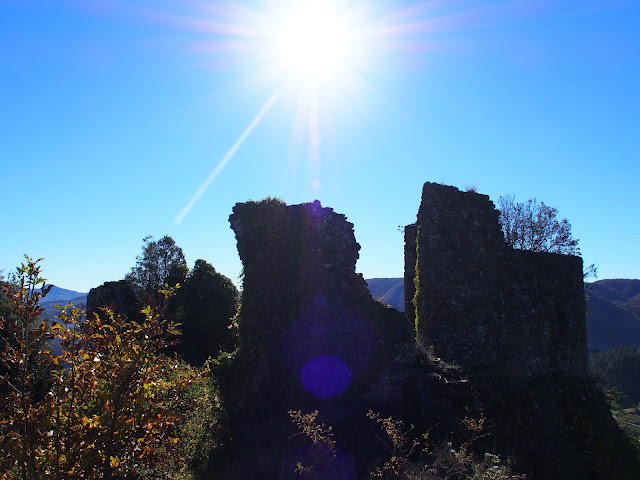



























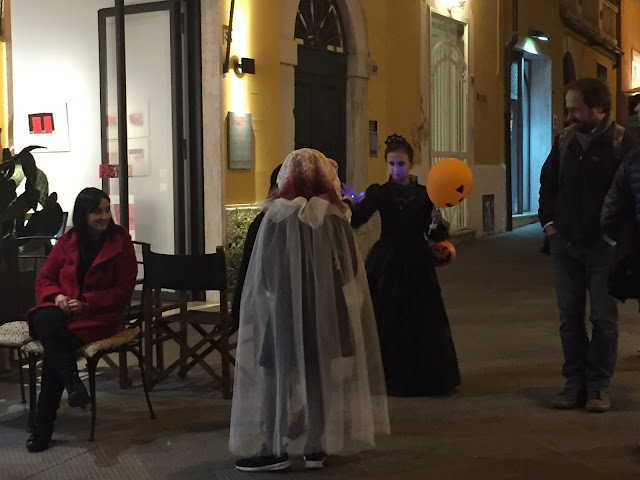























































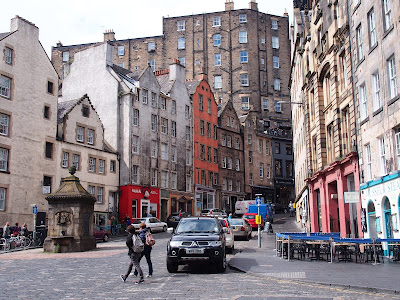
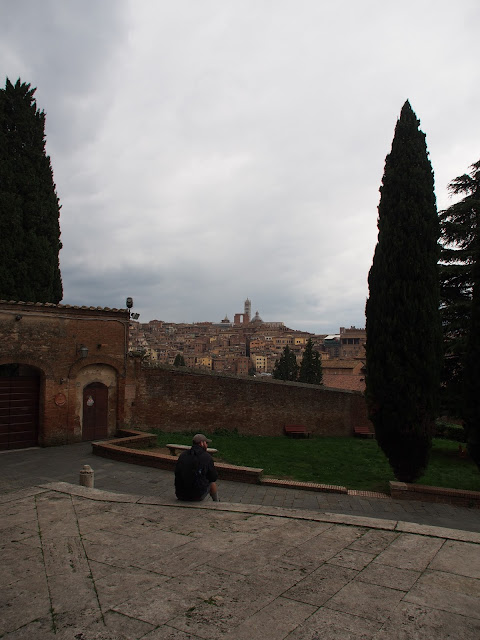

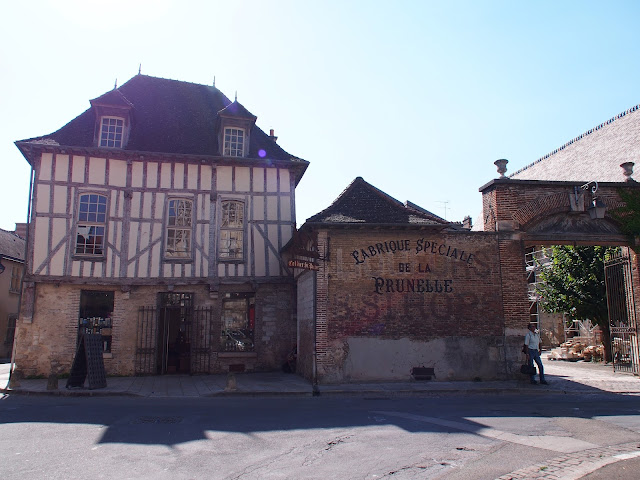




Comments
Post a Comment